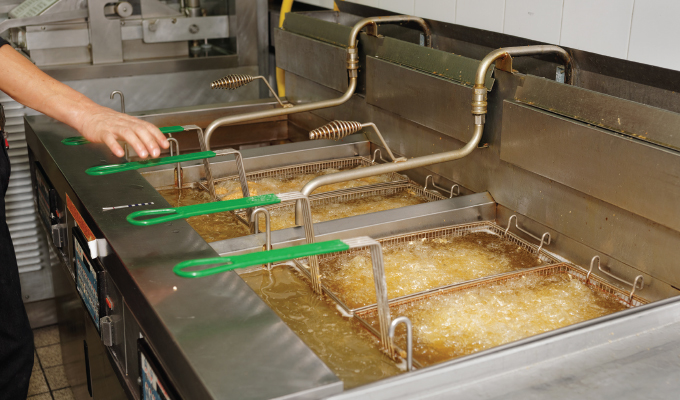Google data indicates a 70% increase in the search for “vegetable oil fuel” in the past week at the time of this writing. This is double the search from the previous week. The increased search can only mean one thing: It seems Americans are turning to used cooking oil alternatives to get their vehicles up and running.
Searches for vegetable oil fuel were highest in Oregon—a state with some of the highest gas prices at the time, according to Route Fifty—followed by Kentucky, Missouri, and Tennessee.
According to the US Energy Information Administration, in the United States, the average regular gasoline retail price increased nearly 1 cent to $3.39 per gallon on November 1. That price is $1.28 higher than a year ago.
With rising gas prices driving interest in alternative fuel, the car insurance experts at Confused.com have shared tips on how to make your vehicle more fuel-efficient.
6 GAS-SAVING TIPS
Alex Kindred, car insurance expert at Confused.com revealed six simple ways you can increase your fuel efficiency and save on gas.
1. Maintain Your Vehicle
Keeping your vehicle in a good condition should help to cut costs. This includes booking it for regular services and getting things fixed when they’re not working properly.
2. Remove Excess Weight
Remove your roof rack when you’re not using it and get rid of any rubbish in the vehicle. Ladders, toolboxes, specialty equipment, and so on might be handy from time to time, but they cost money to transport. Instead, plan trips requiring those heavier materials together, and unload them when they’re not needed. Give cargo vans and truck beds a clear-out and keep them light. More weight means more fuel to pull it up those hills.
3. Inflate Tires to the Correct Pressure
If you don’t know whether you have the correct tire pressure, your fuel economy should tip you off. The surface area in contact with the road increases when a tire is under-inflated. And the more surface area in contact with the road, the more drag on the wheel. Tell all your drivers and maintenance personnel to look for the manufacturer’s recommended PSI label on the edge of the vehicle’s door, on the doorpost, or in the glovebox, then make sure they keep the tires inflated.
4. Top Up Your Tank with Only as Much Fuel as You Need
Topping up your fuel tank with only what you need and avoiding having a full tank means the fuel you do have goes slightly further. To make it easier to judge the correct amount of fuel, ask drivers to keep a notebook in the glove box or keep a record on their phone. When drivers or maintenance personnel fill up, ask them to write down how much fuel they put in to get from point A to point B. Note this in the amount of fuel pumped and not in the amount spent, as the price is always changing.
Keep in mind, some fuel tanks hold more than 115 gallons, and that’s a significant amount of extra weight to carry on trucks that strictly run local routes. Think about it this way: You wouldn’t leave 115 gallons worth of bottled water in your vehicle, would you?
5. Go Easy on the Accelerator
Your drivers’ driving styles make a big impact on how much gasoline or diesel they use. Coach drivers to keep their driving smooth with gentle acceleration, more coasting, and less hard braking. What’s more, when approaching traffic lights, coach drivers to ease off the accelerator early if the lights are red. Why hurry just to wait? These actions are sometimes called “defensive driving.” Not only should it help your fleet use less fuel, but it can help your fleet be safer, too.
Many telematics systems can also monitor your driver’s habits and—through alerts and coaching—can encourage them to use less fuel.
6. Avoid Idling
Running engines at idle consumes roughly half a gallon to about a gallon of fuel every hour, not to mention the carbon dioxide pumped into the atmosphere. This means you’re burning about 1.067 to 2.13 ounces of fuel every minute you idle.
With OEMs creating more efficient vehicles nowadays, drivers are likely to burn less fuel by simply turning off their engine and then restarting it when they have to move again.
Saving money on fuel doesn’t require you to convert your fleet to electric or fuel your fleet with cooking oil. Fleets can save on fuel by ensuring their drivers and maintenance personnel simply maintain vehicles, remove unnecessary weight, keep tires inflated to the recommended pressure, fill up the tank with only what is needed, practice safe driving habits, and avoid idling.
FOR MORE INFORMATION
The contents in this article was provided by Confused.com. Confused.com is a place for insurance shoppers to compare rates online. Find out more, visit www.confused.com.




